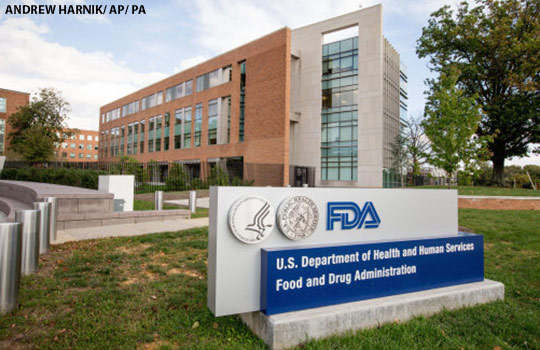 In mid-August 2017, Donald Trump, the President of the United States, signed the FDA Reauthorization Act 2017, under which drug and device makers pay the FDA a fee for every new product application. User fees have been a significant component of FDA funding since the passage of the Prescription Drug User Fees Act in 1992. The initial impetus for user fees in the US was the continuing reluctance of Congress to allocate sufficient resources to allow the agency to fulfill the many obligations required of it by law. Currently, user fees fund about 70% of the FDA’s operating budget for regulating prescription drugs. In requiring companies to help fund drug regulation, the FDA is not unique. All of the major regulatory agencies have the same requirement and in some cases these fees cover almost 100% of costs.
In mid-August 2017, Donald Trump, the President of the United States, signed the FDA Reauthorization Act 2017, under which drug and device makers pay the FDA a fee for every new product application. User fees have been a significant component of FDA funding since the passage of the Prescription Drug User Fees Act in 1992. The initial impetus for user fees in the US was the continuing reluctance of Congress to allocate sufficient resources to allow the agency to fulfill the many obligations required of it by law. Currently, user fees fund about 70% of the FDA’s operating budget for regulating prescription drugs. In requiring companies to help fund drug regulation, the FDA is not unique. All of the major regulatory agencies have the same requirement and in some cases these fees cover almost 100% of costs.
On the surface, charging companies for public services seems to make sense. After all, riders on public transit help pay for some of the costs and airlines are charged gate fees at publicly owned airports. However, there are significant differences. Transit riders are single individuals with little power to influence the transit agency. Even though airlines are often large economic units with considerable financial power, any influence they have over the operation of airports is unlikely to affect public safety. The same is not the case when it comes to drug companies and regulatory agencies.
The reason for concern comes from something called principal-agent theory. This theory proposes that there is a relationship between a principal who has a task that needs to be performed and an agent who is contracted to do the task in exchange for compensation. Prior to the introduction of user fees, the principal was the public and the agents were the regulatory bodies. However, since the advent of user fees a new principal has been added, the pharmaceutical industry and now the regulatory agency has two principals with competing values. In the case of the public, the primary value is to have effective and safe drugs, but in the case of the pharmaceutical industry, its primary goal is to get its products through the approval system as quickly as possible and to sell those products to as wide an audience as possible. At times, it seems that regulatory agencies prioritize the latter at the expense of the former. Shortly after Canada introduced user fees, the head of the part of Health Canada that regulates prescription drugs issued a memo in which he said that “the client is the direct recipient of your services. In many cases this is the person or company who pays for the service.” The one page document focused on service to industry and relegated the public to the secondary status of “stakeholder” or “beneficiary.”
In a similar vein, a British House of Commons Committee looking into the influence of the pharmaceutical industry concluded “The MHRA, like many regulatory organisations, is entirely funded by fees from those it regulates. However, unlike many regulators, it competes with other European agencies for fee income. This situation has led to concerns that it may lose sight of the need to protect and promote public health above all else as it seeks to win fee income from the companies.”
User fees are reauthorized in the US on a five year cycle. When they came up for renewal in 2007, a number of prominent American commentators, including Marcia Angell, a former editor of the New England Journal of Medicine and Jerry Avorn, a leading pharmacoepidemiologist, opposed its reauthorization and instead called for increased Congressional appropriations in order to allow the FDA to undertake its responsibilities free from any apparent conflict-of-interest.
Between 1993 and 2002 the extra money available to the FDA allowed it to increase the number of new drug reviewers by 77%, from 1300 to 2300 full-time equivalents. A study by the US General Accounting Office (GAO) showed that this increase in agency staff was associated with a drop in median total approval times for all standard new drug applications from 27 months in 1993 to 14 months in 2001 and times for priority new drug applications times went from 20 to 6 months. However, until 2002 user fees could only be used to hire new reviewers and not to improve postmarketing safety. Safety in the world of user fees is an ongoing worry.
Besides authorizing the collection of user fees, the original PDUFA legislation also contained provisions committing the FDA to continual improvements in the percent of new drug applications approved within set periods of time. There are concerns that tying decisions about new drug applications to rigid timelines can have an impact on postmarket safety. Carpenter and colleagues looked at postmarket safety of products that were approved within 60 days of the FDA’s deadline and compared their safety to that of drugs approved at other times. Drugs approved in the 60-day window were more likely to be withdrawn for safety reasons, more likely to carry a subsequent black-box warning, and more likely to have one or more dosage forms voluntarily discontinued by the manufacturer. Although Carpenter and his coauthors don’t offer any definitive explanation for their finding, one hypothesis is that as the deadline approached, FDA reviewers became worried about exceeding the timeline and missed safety signals.
The relatively painless passage of the FDA Reauthorization Act of 2017 through the US Senate (only Bernie Sanders voted against) was a missed opportunity to engage in a vigorous debate about the merits and demerits of user fees. It might be another 5-years until there is another opportunity for this debate.
Joel Lexchin is a Professor Emeritus in the School of Health Policy and Management at York University and works as an emergency physician at the University Health Network in Toronto.
Competing interests: In 2015-2017 Joel Lexchin received payment from two non-profit organizations for being a consultant on a project looking at indication based prescribing and a second looking at which drugs should be distributed free of charge by general practitioners. In 2015 he received payment from a for-profit organization for being on a panel that discussed expanding drug insurance in Canada. He is on the Foundation Board of Health Action International.
